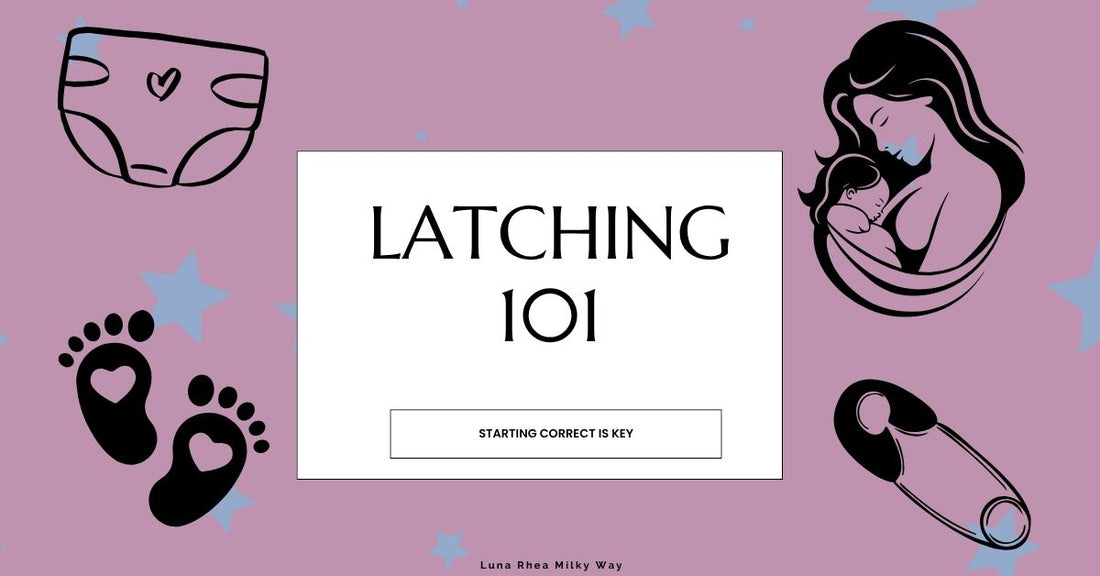
How to Get Your Baby to Latch On While Breastfeeding
Breastfeeding is a natural and beautiful experience, but getting a proper latch is key to ensuring a smooth and comfortable feeding session for both you and your baby. If you're struggling with latching, don't worry—you’re not alone! Here are some helpful tips to guide you through the process.
Steps to Achieve a Good Latch
1. Tickle Your Baby’s Lips
Once you are in a comfortable position for you and your baby, gently rub your nipple against your baby’s lips. This action encourages your baby to open their mouth wide. A fully opened mouth is critical to a good latch.

Photo Courtesy: USDA
Bonus Tip: Having Comfy Postpartum clothes can help with your new journey! Here are some of our favorites including breastfeeding tees with discreet zippers: Postpartum Clothing Must Haves
Our favorite Luna Rhea Breastfeeding T-shirt
2. Position Your Nipple Correctly
Aim your nipple just above your baby’s top lip. Make sure their chin isn't tucked into their chest, as this can make it difficult for them to latch properly.

3. Encourage a Deep Latch
Your baby’s lower lip should be positioned away from the base of your nipple. Their lips should be turned outward, resembling a fish’s mouth. Your baby should lead into the breast with their chin first before latching. Their tongue should extend, and your breast should fill their mouth.

4. Break a Bad Latch if Necessary
If your baby latches onto just the tip of your nipple or if you experience pain, gently insert a clean finger into their mouth to break the latch. Then, try again to ensure a more comfortable position. Allowing your baby to latch on to just the nipple can turn the experience painful so breaking up a bad latch is highly encouraged.
Signs of a Good Latch
Not sure if your baby has a good latch? Here are some signs that indicate successful breastfeeding:
- The latch is comfortable and pain-free.
- Your baby’s chest and stomach rest against your body, keeping their head straight.
- Your baby’s chin touches your breast.
- Their mouth opens wide around your breast, not just the nipple.
- Their lips turn outward.
- Their tongue cups under your breast.
- You hear or see swallowing.
- Your baby’s ears move slightly as they nurse.
Troubleshooting Latching Issues
If you’re having difficulty getting a proper latch, try these tips:
- Move to a quiet, calm place to minimize distractions.
- Hold your baby skin-to-skin—this means undressing both yourself and your baby and holding them against your chest.
- Let your baby lead by supporting their neck, shoulders, and hips with your hands. Offer your breast but allow them to find the nipple on their own.
Breastfeeding takes practice and patience. Forming good habits from the start can set you for success for the long run. Every body, baby and environment is different. We hope you find what works for you!
